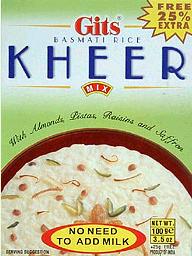
Candida Martinelli's Italophile Site

Main
Page This family-friendly site celebrates Italian culture for the enjoyment of children and
adults. Site-Overview
Rice
Pudding, an Ancient Treat and Wonderful Winter Food (Grazie you for the lovely message in the guest-book that
mentions this page as a "history of rice pudding since Eve offered
some to Adam with steamed apple, no doubt". Candida)
Quick links for this page's recipes:
Easy Rice Pudding Recipe - Made with
Cooked Rice
The earliest settled humans
cultivated grains and made pap, bread and alcoholic drinks from them.
Later humans traded for grains with neighbors, and
eventually adopted their neighbors’ plants, cultivating them where
their climate and soil permitted. Through trade, rice
traveled from Asia, where it was originally a native grain, to all
around the globe. Eventually,
however, rice came to be grown around the globe.
And on every step along the way, rice was made As rice moved from cuisine to
cuisine, the rice pap was: But the results, no matter
what the culture, were always the same:
a nutritious, easy to digest, energy-rich, rice treat.
Our bodies break down the carbohydrates in rice very quickly,
releasing the energy for near-immediate use.
That’s why it’s considered a wonderful warming winter food.
And rice contains almost no fat. With that in mind, below is
my recipe for a wonderful, warming, wintry Rice Pudding that’s
ready in minutes. I offer
some variations you can use to adjust it to your tastes or dietary
requirements, so you can continue in the traditions of the earliest
humans. JUST A NOTE: This recipe is for cooked rice.
I try to make extra rice whenever I cook some, then
freeze 2 cup portions for when the Rice Pudding craving hits. It’s easy to thaw it out in the microwave.
Or if you’re ordering take-away food from a place that serves
rice, order some plain rice, too.
You can use any leftover rice immediately for Rice Pudding, or
freeze it for later. Mix
together in a saucepan: 1
½ cups sugar 6
tablespoons flour (
½ - 1 teaspoon salt if the cooked rice is unsalted) Set
the pan over a high heat and add while stirring: 2
cups whole milk 2
cups cream When
the mixture is hot, add stirring: 2
cups cooked rice 2
teaspoons vanilla extract Keep stirring as it comes to a
boil, then reduce the heat slightly to keep a rolling boil, and stir
for 3 minutes. Then
remove it from the heat and let it cool.
It thickens more as it cools. You can serve it warm, room
temperature or cold, garnished to your taste:
whipped cream, chocolate shavings, cinnamon, fruit, nuts…. Ingredient substitution: Cooking variations: The Forme of Cury
is a medieval cooking guide from the year 1390 that was compiled by
the mastercooks of England’s King Richard II.
It includes roughly 196 recipes, which were called Rice was imported from the
Near and Far East during that time, so it was expensive and definitely
a food fit for a King! In
the Forme, which is written in Late Middle English, rice is
spelled 'res' or ‘ryse’ or ‘rys’.
There are recipes for a rice pap (resmolle) and for a
saffron risotto (Potage of Rys). Late Middle English is just
readable by us today if you read the text aloud.
It sounds like English even if the spellings are different.
For example, the instructions for cooking rice begin: Take Ryse and waishe hem
clene…
(Translation: Take
rice and wash him clean…) When rice began to be cultivated in Italy’s Po Valley, the
price came down and it’s use in European cuisine increased,
especially in Italian cuisine. Each of these three Italian rice desserts uses the same basic
recipe, the difference is in how they are cooked. Use my Easy Rice Pudding recipe
from above, then add the following to the completed Rice Pudding. Use the resulting batter for each of the three types of Italian
rice desserts listed above: Budino di riso, Frittelle di riso, Crostata
di riso (it's enough for 2 tarts).
Here's the Crostata crust recipe. ½ cup flour ½
cup melted butter ¼
cup sugar 2
egg yolks 1
tsp grated lemon rind 1
tsp sweet dessert wine (such as Marsala or Vin Santo) Mix
the butter with the flour. Add
the sugar, egg yolks, wine, and the lemon rind and work it quickly
into a dough. Form the
dough into a ball, wrap it in waxed paper and place it in the
refrigerator for at least 1 hour.
Remove, roll out, and fit into the tart pan. Use all the dough, folding the sides in to make a thick edge
to the thick crust. (Alternately, you can fit it in the pan immediately, then set the pan in
the freezer for 15 minutes.) If you’re interested in
making one of the world’s many Rice Puddings, type their names in
any search engine with the word ‘recipe’, and lots of recipe-links
appear. If you’re interested in
learning more about the history of Rice Pudding and variations found
around the world, Wikipedia has lots of interesting trivia on
their Rice Pudding
Page. So stay warm in winter with an
ancient dish as old as humankind, and very easy to make:
Rice Pudding! Visit all
my Summer Sweets Pages:
Dolci
al cucchiaio - Spoon-Breads

![]()
The Earliest Humans Ate Pudding
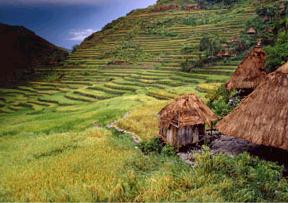 The earliest hunter-gathers
collected grains and boiled them up
to make a pap or pudding or gruel, sweetened with honey.
It was a nutritious, warming food that was very easy on the
stomach, which is why it’s still a baby’s first food and given to
invalids.
The earliest hunter-gathers
collected grains and boiled them up
to make a pap or pudding or gruel, sweetened with honey.
It was a nutritious, warming food that was very easy on the
stomach, which is why it’s still a baby’s first food and given to
invalids.Rice and Rice Pudding Came from Asia
 into rice
pudding.
into rice
pudding.
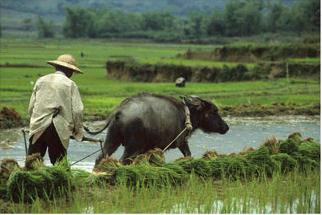 I
Believe Firmly that Good Food Does NOT Require Hard Work!
I
Believe Firmly that Good Food Does NOT Require Hard Work! 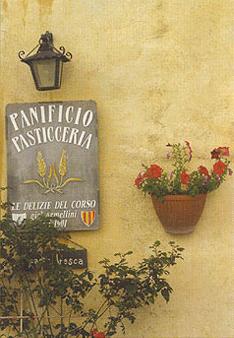 Easy Rice Pudding
Easy Rice Pudding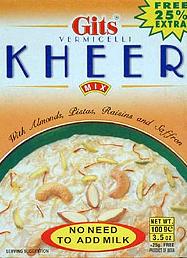 Some
Variations (inspired by World Recipes)
Some
Variations (inspired by World Recipes)
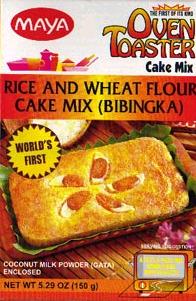 cardamom, nutmeg, cinnamon, saffron.
cardamom, nutmeg, cinnamon, saffron.
Rice in an Ancient English Cookbook
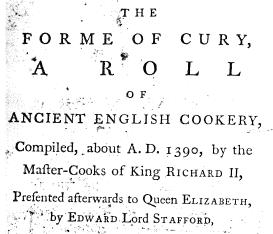 formulas
back then, as cookery was considered a branch of medicine. In fact, in many Romance Languages, the word for a drug
prescription is the same word that became the English word
‘recipe’.
formulas
back then, as cookery was considered a branch of medicine. In fact, in many Romance Languages, the word for a drug
prescription is the same word that became the English word
‘recipe’. 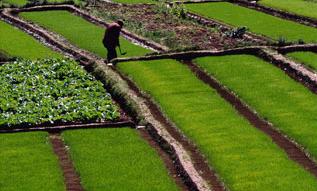 But it just goes to show how
rice and rice dishes passed from one culture to another, usually
starting from the top of society.
This was because only the wealthy could afford the early
imported rice and the spices needed to flavor it.
(For those who are interested, here's a link to an on-line PDF copy of
The Forme of Cury.)
But it just goes to show how
rice and rice dishes passed from one culture to another, usually
starting from the top of society.
This was because only the wealthy could afford the early
imported rice and the spices needed to flavor it.
(For those who are interested, here's a link to an on-line PDF copy of
The Forme of Cury.)Italian
Rice Pudding (Budino di riso), Rice Fritters (Frittelle di riso), Rice
Tart (Crostata di riso)
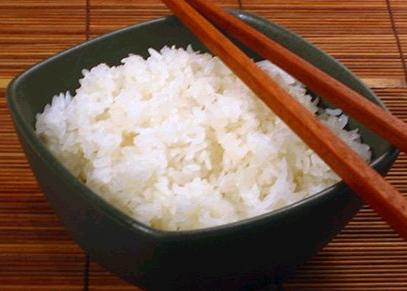 Simple
Basic Recipe for Italian Rice Desserts
Simple
Basic Recipe for Italian Rice Desserts
Crostata
Crust -
One Tart Crust
Some World Cuisine Rice Puddings
